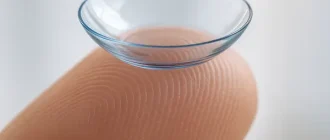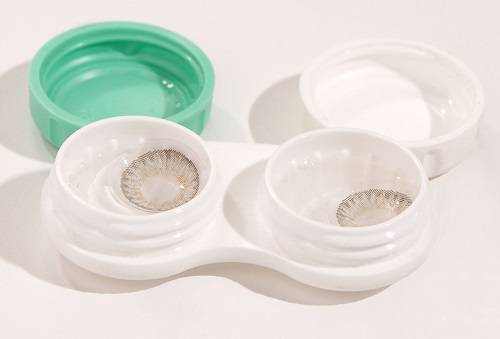Have you noticed that reading small text on your phone or a restaurant menu has become difficult? Are you tired of constantly relying on reading glasses for daily tasks? If so, you might be experiencing presbyopia, an age-related vision condition.
Effectiveness Comparison: Kamra Inlay vs. Corneal Implants
The chart compares the effectiveness of Kamra Inlay and Corneal Implants in vision correction. Corneal implants show slightly higher success rates, but both options provide significant improvement for patients with presbyopia.
Understanding Presbyopia and Surgical Solutions
Presbyopia is an age-related vision condition where the eye loses its ability to focus on near objects. It typically begins around the age of 40 and progresses over time. While reading glasses and multifocal contact lenses are common solutions, surgical options like Kamra Inlay and corneal implants offer a more permanent fix. But how do these treatments compare?
What is Kamra Inlay?
The Kamra Inlay is a small, ring-shaped corneal implant designed to improve near vision by increasing depth of focus. The device is inserted into the cornea of the non-dominant eye, creating a pinhole effect that sharpens near vision without significantly affecting distance vision.
Pros:
- The procedure is minimally invasive, meaning it requires only a small incision in the cornea without major surgery.
- It helps maintain clear distance vision in the dominant eye, so daily activities like driving remain unaffected.
- Many patients find they no longer need reading glasses for everyday tasks like checking their phone or reading a menu at a restaurant.
Cons:
- Some patients experience glare or halos around lights, especially at night, which can feel similar to looking through a foggy window.
- The brain and eyes need time to adjust to the implant, and this adaptation period can last from a few weeks to a few months, varying from person to person.
- People who already suffer from dry eyes might not be good candidates, as the implant can make the condition worse, causing discomfort and irritation.
What are Corneal Implants?
Corneal implants, also known as presbyopic inlays, include options such as the Raindrop Near Vision Inlay and Flexivue Microlens. These devices modify the curvature or refractive power of the cornea to improve near vision.
Pros:
- Helps restore clear vision for reading and close-up tasks.
- Some models can be removed if the results are unsatisfactory.
- Unlike monovision treatments, these implants aim to maintain a balance between near and distance vision.
Cons:
- Some patients experience a cloudy or hazy vision effect, similar to looking through foggy glasses.
- Night vision problems, such as difficulty seeing in dim lighting or increased glare from headlights, may occur.
- A higher chance of the body rejecting the implant compared to the Kamra Inlay, requiring potential removal or replacement.
Kamra Inlay vs. Corneal Implants: Key Differences
| Feature | Kamra Inlay | Corneal Implants |
|---|---|---|
| Mechanism | Pinhole effect | Changes corneal curvature |
| Invasiveness | Minimally invasive | More invasive |
| Side Effects | Glare, halos, contrast sensitivity loss | Haze, night vision issues |
| Reversibility | Yes | Varies by type |
| Adaptation Time | Weeks to months | Weeks to months |
Patient Reviews and Clinical Outcomes
Patients who undergo Kamra Inlay surgery generally report significant improvement in near vision, but some struggle with side effects like glare and reduced contrast. Success rates vary, but most patients experience a noticeable reduction in dependence on reading glasses.
Common Side Effects Reported by Patients: Kamra Inlay vs. Corneal Implants
The chart illustrates common side effects reported by patients undergoing Kamra Inlay and Corneal Implants procedures. While both methods offer benefits, side effects such as dry eyes, glare, and vision fluctuations should be considered when choosing a procedure.
For corneal implants, feedback is mixed. The Raindrop Near Vision Inlay was removed from the market due to safety concerns, but other options like Flexivue continue to be used in certain cases. Some patients achieve excellent results, while others report long-term complications.
Editorial Advice
If you’re considering surgical options for presbyopia, consult a corneal specialist to determine the best fit for your eye health and lifestyle. Kamra Inlay may be a better choice for those seeking a minimally invasive solution, while corneal implants can be considered for individuals looking for an alternative approach. As always, weigh the benefits against potential risks before making a decision.
According to Reyus Mammadli, Health Care Advisor, patients should also consider their daily visual needs—whether they frequently read, drive at night, or work on digital screens—as these factors can influence which option provides the best long-term results.
How Many Patients Stop Using Reading Glasses?
| Procedure | Patients Who No Longer Need Glasses (%) |
|---|---|
| Kamra Inlay | 70% |
| Corneal Implants | 80% |
The table compares the percentage of patients who no longer need reading glasses after undergoing Kamra Inlay or Corneal Implants. Corneal Implants show a slightly higher success rate in reducing dependency on reading glasses.





